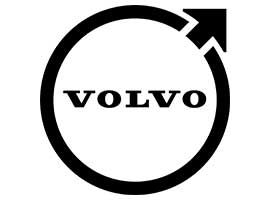
Does Your Corporate Culture Excel in Truth, Doing & Simplicity?
Strengthening the success of a corporate culture is as easy as being honest, modeling exceptional behavior, and a full outright integration of “say and do.” YET, even in its simplest form, building a corporate culture that excels in upstanding moral and ethical values takes work. What I call the “Culture Cyclone” begins when leaders do what they say. Effective leaders of cohesion have a mindset that puts others before self and builds an environment where belonging, value, and commitment are constantly in motion.
With a Culture Cyclone in place, the organization spins upward creating a positive environment and its people can grow and evolve. It operates with truth as a foundation, and inclusion as a mainstay.
In the popular TV series “To Tell the Truth” only one guest is sworn to answer all questions honestly. The other two guests are free to lie and deceive the panelists all in a spirit of good fun. Of course, the outcome is to determine if the panelists can decide which of the three is telling the truth. When it comes to our work environment, we do not want to play a guessing game. In fact, effective leaders of cohesion build organizational values around concepts like integrity, honesty, truthfulness, teamwork, excellence, adaptability, respect, and so on. Although life has a strange way of following art at times, I suggest that the odds of a vibrant and healthy work culture are significantly improved when employees swear to be truthful, trustworthy, candid, and forthcoming.
In this newsletter edition, I offer three principles that can make a work culture excel in the area of talent retention.
- Tell the truth.
- Do what is right.
- Make the corporate culture simple to follow.
1. Tell the truth: Build corporate culture with honesty.
People are more inclined to trust an organization and its leadership when truth, candor, and the pursuit of honesty are aspects of integrity. Employees want to follow leaders who build success around inclusion, autonomy, and collaboration. There is a higher success rate in talent retention when honesty is an active component of the work culture. Employees are free to express ideas and their concerns are heard and resolved in an open and straightforward manner.
Overall, leaders do not have a strong track record in this category. Meaning employees believe their supervisor focuses on self before others. Which is completely contrary to the type of leader who maintains good relationships and retains his or her talent. In fact, two-thirds of employees do not trust their immediate supervisor. We’re talking 63% of the employee base does not have a favorable, trusting connection with their boss. Not surprising that 50% of these employees are more comfortable trusting a stranger, AND an overwhelming 92% of employees will trust their co-workers BEFORE a supervisor.

Let that sink in.
Employees quit bosses not companies.
What causes the truth factor to become degraded? Because leaders fail to live up to being teachable, compassionate, humble, truthful, and peace-making. These ineffective leaders focus attention on self and often show favoritism towards in-groups, alter the details of the story so that it sells, and blatantly exert institutional power to dominate and control profit over people.
On the flip side, the Trust Index Employee Survey (TIES) conducted annually by the Great Place to Work Institute (GPTWI) claims when the qualities of honesty and integrity are actually observable within a company’s workforce, the organization is deemed more productive.
The higher the measure of integrity, the better the firm performance.
This is great news for corporate culture and is a perfect environment for the strategic elements of cohesion to thrive. The researchers found a strong connection between honesty and employee performance, attitude, and the drive to achieve shared mutual commitments.
2. Do what is right: Model effective behavior.
Without exception, the CEO and the senior most leaders must adopt a mindset that eliminates the chasm between “leader says” and “leader does.” Meaning there is no gap … no space … no deviation between words and actions. This concept must be upheld in all leadership positions within the company. When a concept, philosophy, or policy is spoken it must apply across the organization. Every employee must be held to the same standards expressed by the core values or guiding principles and be treated equally and equitably regardless of position or tenure.
Doing what one says is an important verbal and physical commitment that supports integrity and truthfulness. So, how do we know when people are modeling what is right? People watch others and learn from them. We lead by example. It is quite common to make sense of how people are treated or behave toward one another. We observe interactions, whether conforming or contrary to the desired expectations expressed through core values. This is why it is extremely important to hire people who align with the core values of the company. If you want honesty, teamwork, and accountability to be the model of what is right, then hire people who demonstrate those values.

Employees who are active in creating a corporate culture where people belong, have value, and work harmoniously to achieve work commitments are the catalysts to help the culture evolve. I call these folks, Culture Catalysts. They uphold the concepts of inclusion, meaningful work, and collaboration with an aim to move the corporate culture forward. They often are the poster children who model truth, positive actions, and simplicity in daily interactions with others. Priming a work culture to keep employees promotes an atmosphere where people are recognized to be authentic, celebrated for the work they do, and encouraged to operate at a high-level of personal and professional ethics.
3. Make the corporate culture simple to follow: Live it, breathe it, and own it.
Keep the fundamentals of the corporate culture easy to understand and simple to uphold. For instance, the core values need to reflect how the organization wants its employees, consumers, and the general marketplace as a whole to think about the company. Don’t go overboard with core values. They need to make sense and be so easy to emulate that all barriers to upholding them are removed. If you can, create an acronym with the values then people can remember and recall it quickly. In fact, some of my clients create core value acronyms that can be incorporated into a rallying cry.
When employees “live it,” they are exhibiting the defined guiding principles (values) through words and deed. This means more than simply reciting concepts like integrity, excellence, continuous improvement, fair treatment, etc. It’s bringing these values to life with tangible actions. Values take life through words of affirmation, and demonstrating good examples for others to follow. For leaders to sustain expected behaviors and support needed change, they must engage in a coaching program that focuses a greater emphasis on upholding and living out core values than the number of widgets associated with goals.
“Breathing it” comes with adopting a mindset that believes the company’s core values are the established set of norms and standards by which to conduct oneself and all lines of business. Employees inhale values and exhale their beliefs in the form of customs, rituals, and traditions. These mainstays of cultural expression include the cultural similarities and differences of the workforce with significant attention towards cultural commonalities.
When employees “own it,” they are taking accountability and responsibility to uphold the organization’s value structure as if the business were owned by the employees themselves. They agree to be teachable, act like a leader whether explicitly or implicitly implied, and make decisions as if they are the CEO of the company.
Applying honesty, modeling good attributes, and creating simplicity of action and ideal are worthy complements to the cohesive elements of belonging, value, and commitment. Together these principles aid in the creation and sustainability of a successful and long-lived work culture.
Tell the truth.
Do what is right.
Make the corporate culture simple to follow.
For more insight on this topic, please refer to these blog posts:
- Grow. Mentor. Invest.
- Make culture a strategy and it will find something else to eat for lunch.
- F.A.I.R. PLAY FOR TALENT
For leadership principles that can be applied today, click here to subscribe to Cohesion Corner™ with Dr. Troy!
Interested in reading more from Dr. Troy Hall? Click here to check out my books available for purchase on Amazon!






